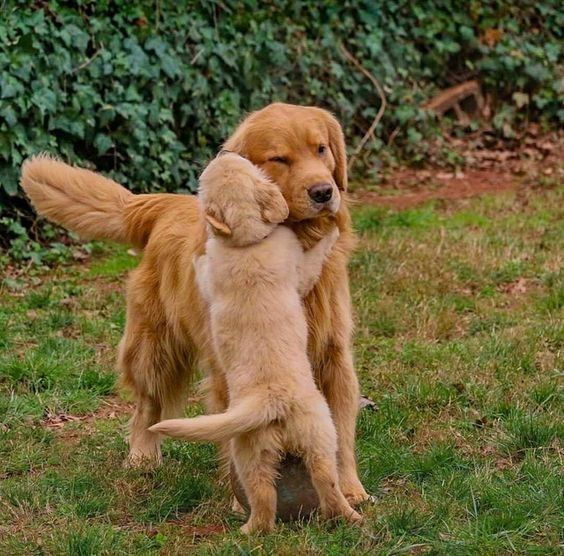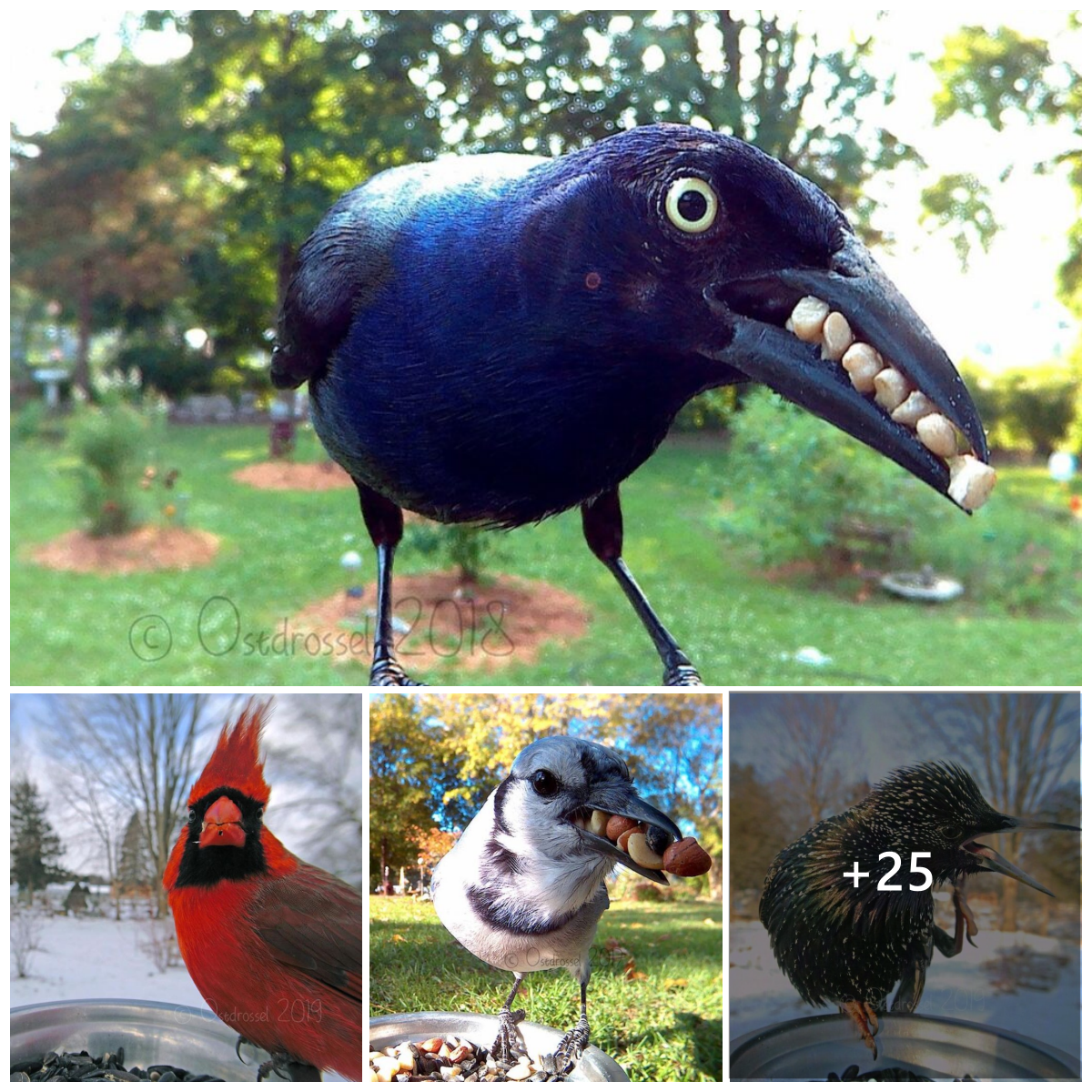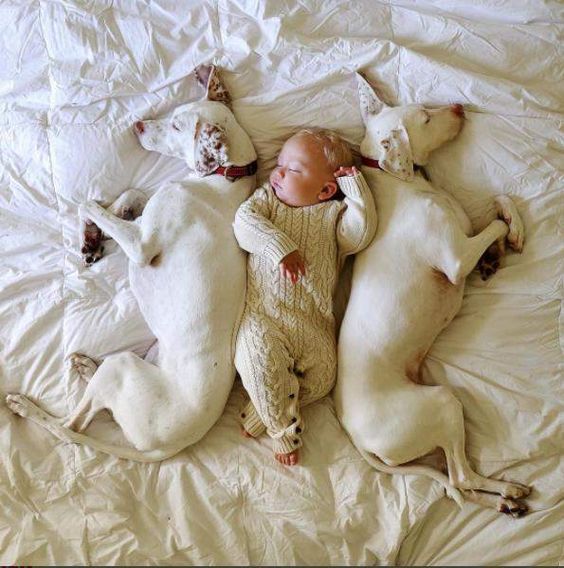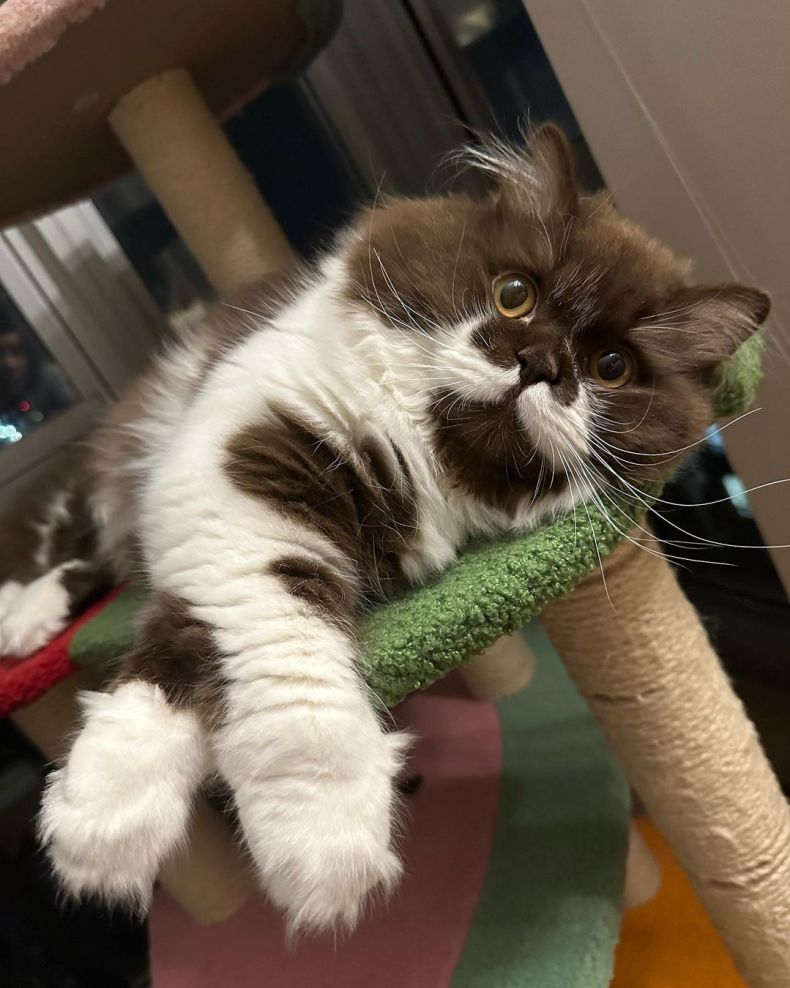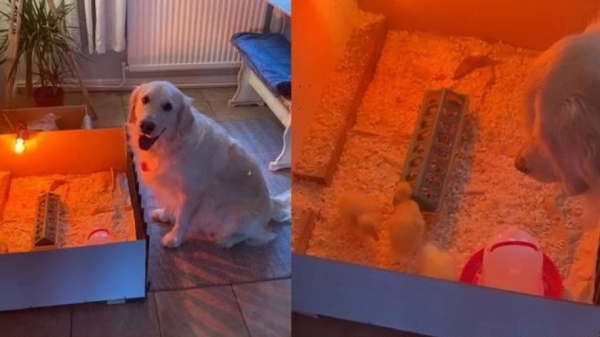In the heartwarming company of a Beagle and a Cat, fascinating and amusing behavior captures the attention of all observers.
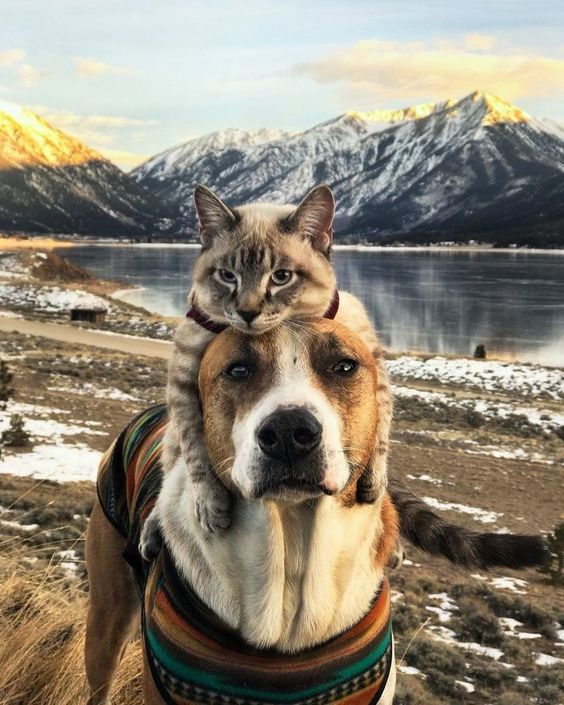
Despite their contrasting characteristics and personalities, the cat has a special affinity for sitting on top of the Beagle’s head.

This peculiar wish has become a pleasant image of their particular bond, demonstrating the fantastic eccentricity that true friendship can harbor.
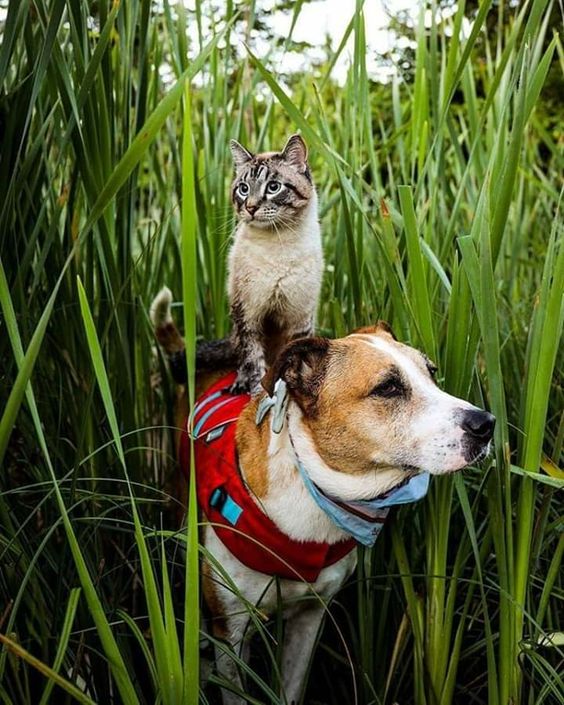
The Beagle and the Cat have a particular bond that goes beyond social norms. The Beagle’s kind and gentle nature enhances the Cat’s quirky habits, creating a friendship based on love and acceptance.

Collectively, they introduce us to the good of accepting the uniqueness of others and celebrating what makes us totally different.

Their playful and unconventional friendship serves as a reminder of the enjoyment that comes from accepting others as they are. In a world full of expectations, the Beagle and the Cat teach us the importance of unconditional love, understanding and friendship without limits.
Tips on How to Prepare a Beagle and a Cat to Become Friends
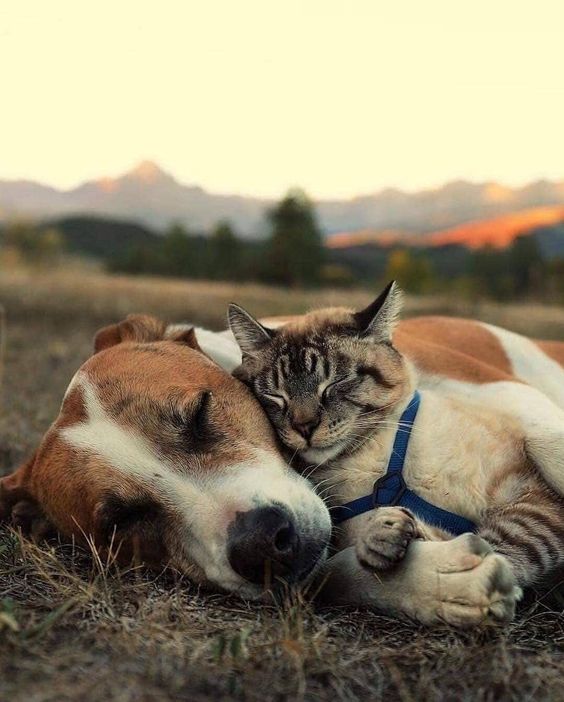
Introducing a Beagle and a cat can be a rewarding but challenging experience. With perseverance, understanding, and the right methods, you can help them form a harmonious relationship. Here is a complete guide on how to train a Beagle and a cat to become friends.
Understand its nature

Beagle Traits: Beagles are pleasant, curious and energetic dogs. They have a strong homing intuition and a very good sense of smell, which often leads them to chase smaller animals.
Cat Traits: Cats are independent, territorial, and often wary of new additions to their environment. They are usually affectionate, but they need their own home and time to adapt to new conditions.

Preparation
Separate Areas – Before introducing them, make sure each pet has its own separate home. This helps them feel really safe and reduces stress. Offer the cat large perches or hiding places where it can actually retreat if it feels threatened.
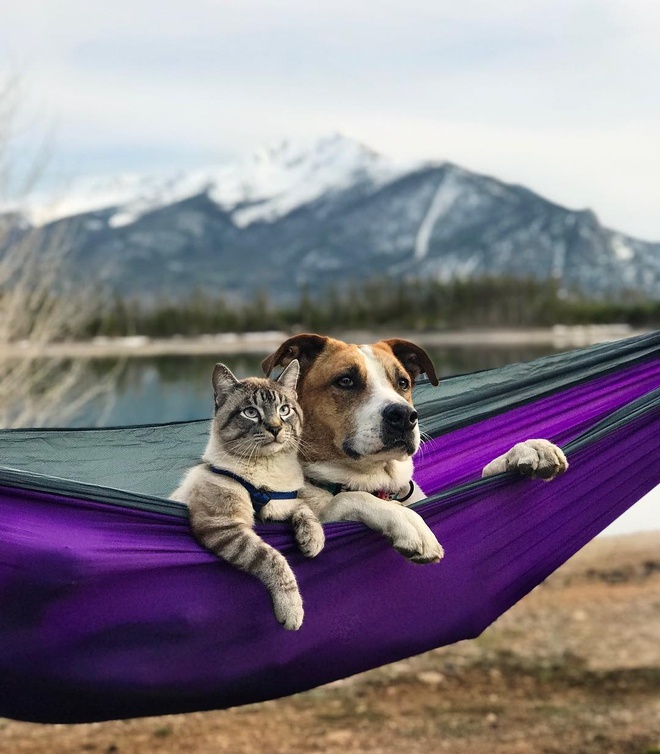
Scent familiarization: Start by exchanging bedding or toys between the Beagle and the cat. This allows them to get used to each other’s scent without direct contact, reducing initial fear or aggression.
The introductory course to
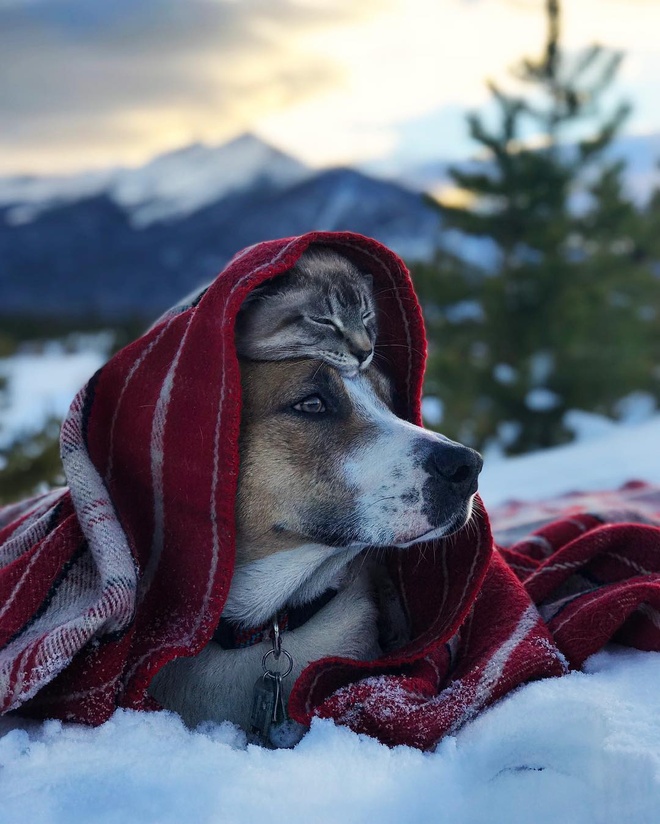
Managed Conferences – Get started with fast, managed conferences. Keep the Beagle on a leash to prevent him from chasing the cat. Allow the cat to approach and examine at its own pace.

Positive reinforcement: Reward both pets with treats and praise their calm behavior during these initial meetings. This helps them associate the presence of others with optimistic experiences.

Monitor physical language: Watch for indicators of stress or aggression. A wagging tail and a relaxed posture in the Beagle indicate friendliness, while a calm, fluff-free tail and a relaxed body in the cat show that he is comfortable. If either pet shows signs of distress (growling, hissing, barking, or raised fur), calmly separate them and check again later.
Building beliefs and friendship
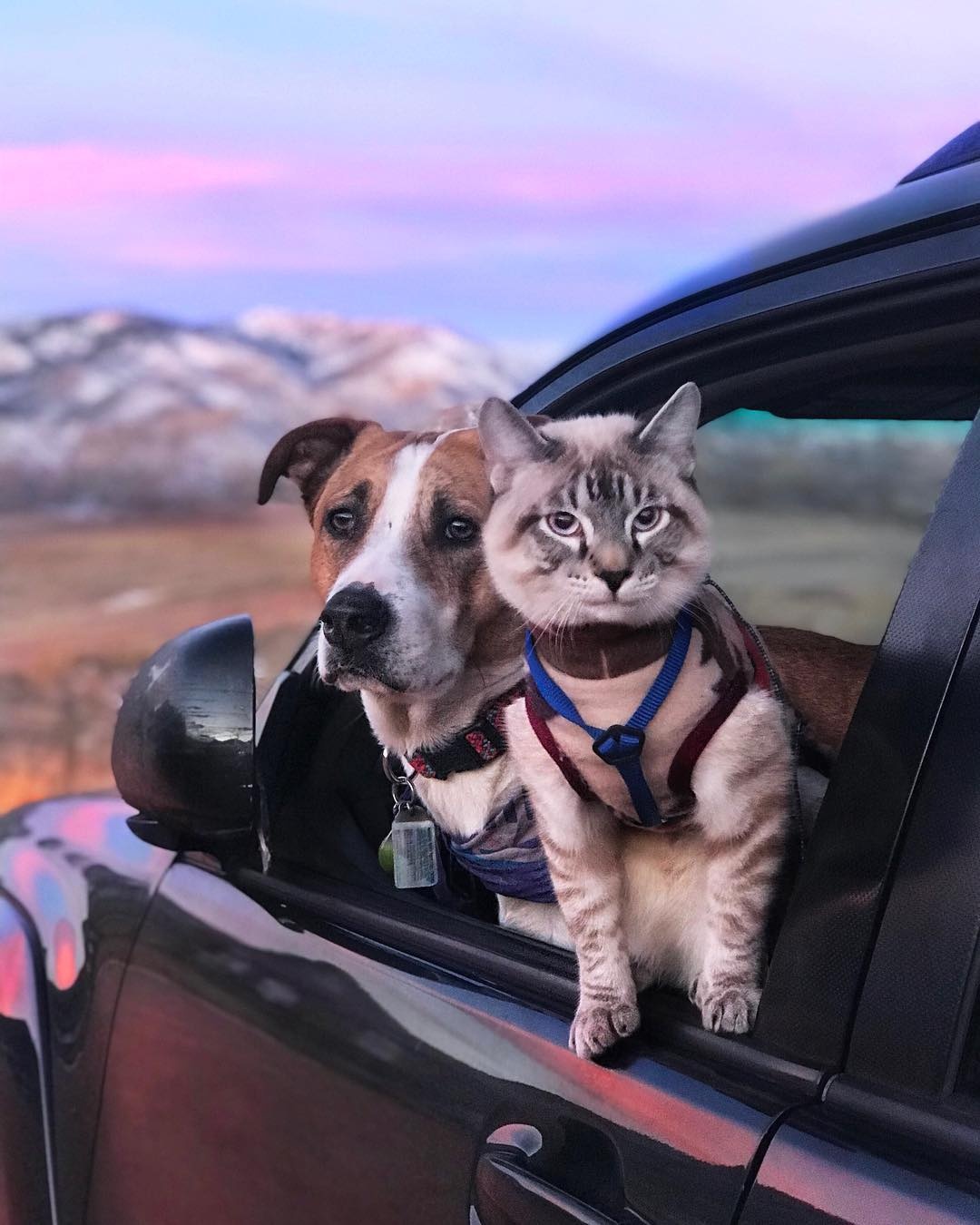
Gradual improvement in interaction: Progressively improve the size and frequency of your interactions. Always supervise these sessions to ensure safety and avoid harmful encounters.
Shared actions: Interact with each pet in shared actions, such as playing with interactive toys. This helps them bond over a common curiosity and reduces any territorial behavior.
Training the Beagle: Teach the Beagle basic instructions such as “sit,” “hold it,” and “leave it.” This ensures that you can control the dog’s behavior in front of the cat and avoid any rough chasing or play.
Respect the cat’s limits: Let the cat set the pace. Cats need time to feel safe and will take longer to accept a new companion. Respecting their need for space and not forcing interactions is essential.
Resistance and consistency
Regular Routine: Maintain a daily routine to provide each pet with a sense of stability. Feeding, playtime, and sleeping schedules should be consistent to reduce anxiety.
Constructive Environment: Create a positive environment by ensuring both pets receive equal attention and affection. This prevents jealousy and helps build a balanced relationship.
Conclusion
Training a Beagle and a cat to become friends requires perseverance, consistency, and understanding of their individual personalities. By following these steps and allowing them to regulate at their own pace, you will be able to foster a peaceful and enjoyable relationship between your Beagle and your cat. The secret is to create a safe and positive environment where both pets feel safe and valued, resulting in a harmonious coexistence.
